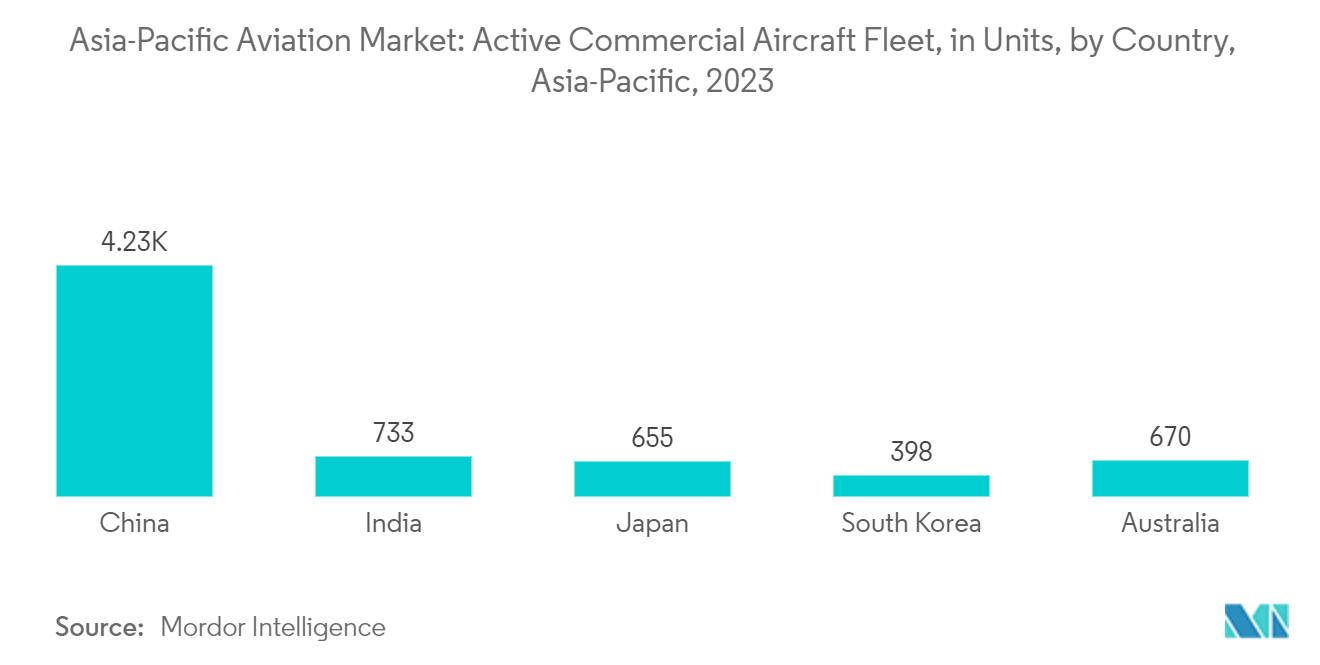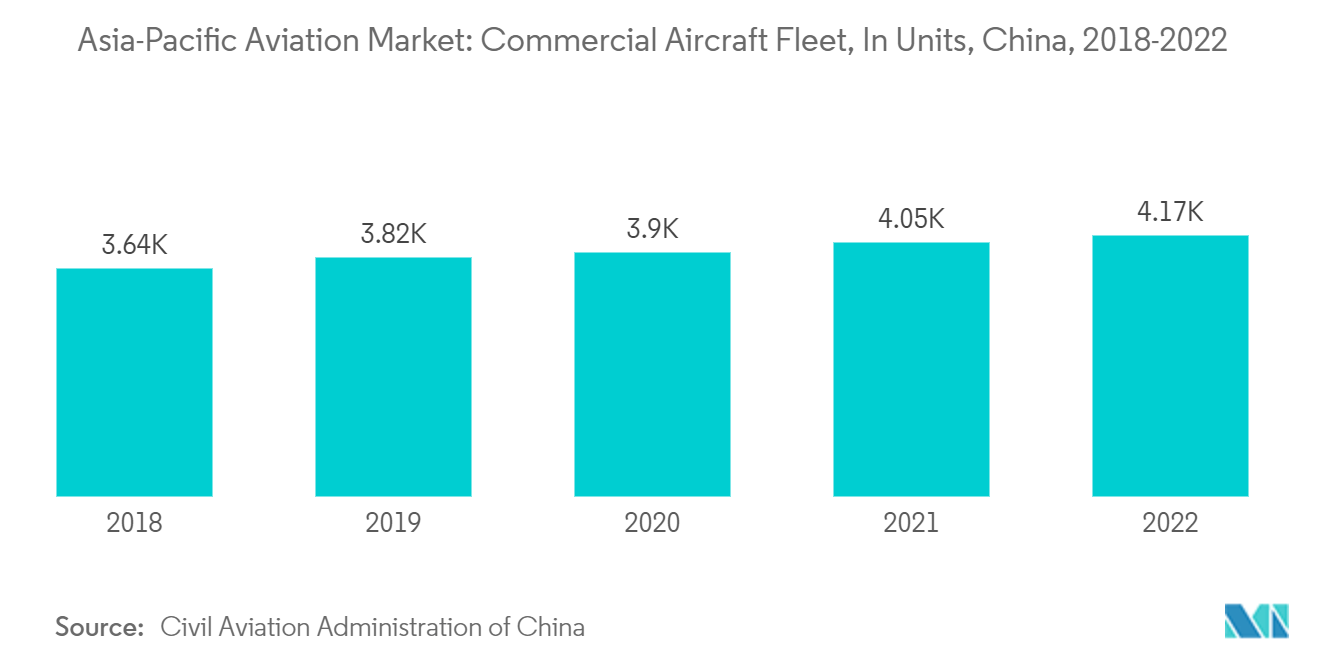Market Trends of APAC Aviation Industry
The Commercial Aviation Segment is Projected to Witness the Highest Growth During the Forecast Period
Asia-Pacific, known for its rapid economic growth, has witnessed a surge in disposable incomes, making air travel more accessible. This has led to a proliferation of low-cost carriers (LCCs) across the region, democratizing air travel and pushing costs down. These carriers rapidly expand their fleets and routes to meet the rising demand, resulting in a notable uptick in new commercial aircraft deliveries.
Moreover, regional governments are increasingly liberalizing air services and streamlining bilateral air service agreements. These policy changes boost flight frequency and route expansions and drive up the demand for aircraft to cater to these additional flights.
Boeing's outlook for the Asia-Pacific commercial aviation market is optimistic. The company forecasts that regional carriers will need around 18,600 new airplanes by 2042. This growing fleet will boost capacity and integrate newer, more efficient technologies, aligning with global sustainability goals.
In a significant move in April 2023, Airbus bolstered its presence in the aviation market through a major deal with China Aviation Supplies Holding Co. The deal involved the sale of 160 aircraft, comprising 150 units from the A320 Family and 10 A350-900 widebody aircraft. This strategic move highlights the strong demand from Chinese carriers across all market segments. Airbus is setting up a second assembly line in Tianjin to support this momentum, effectively doubling its current capacity. This expansion is crucial, as the Tianjin facility is set to produce 20% of all single-aisle aircraft globally, significantly contributing to Airbus's goal of manufacturing 75 aircraft per month by 2026.
Additionally, the collaboration emphasizes Airbus's commitment to sustainability, with a focus on developing an efficient supply chain for sustainable aviation fuels. The partnership aims to incorporate these fuels by up to 10% by 2030, showcasing not just China's importance in Airbus's global strategy but also the dynamic growth of the aviation market in Asia-Pacific.

China to Continue Market Dominance During the Forecast Period
The Chinese government is taking a proactive stance in fortifying its aviation industry at home and on the global stage. It directs substantial investments toward airport infrastructure, with a focus on expanding existing facilities and building new ones to cater to surging passenger numbers. As a clear testament to its ambitions, China is eyeing a target of over 400 local airports by 2035.
As one of the world's largest and fastest-growing economies, China's aviation market is significantly influenced by its increasing urbanization and the rising disposable incomes of its populace. The expanding urban middle class is fueling a heightened demand for both domestic and international air travel, ensuring a buoyant aviation industry.
In a bid to challenge the dominance of Boeing and Airbus, China has significantly bolstered its aircraft manufacturing capabilities in recent years. Spearheaded by companies like Commercial Aircraft Corporation of China (COMAC), known for models such as the C919 and ARJ21, these efforts not only cater to domestic needs but also position China as a formidable global aviation player. A recent milestone in this trajectory was Air China's announcement in April 2024, where the company placed a substantial order for 100 COMAC C919 jets valued at USD 10.8 billion. These jets, slated for delivery between 2024 and 2031, are set to pose a strong challenge to established models like the B737 MAX and Airbus's A320neo. This deal not only cements COMAC's standing in the aviation realm but also signals a strategic pivot by Chinese carriers toward domestic manufacturers.
China's military strategy significantly emphasizes enhancing its air force capabilities, a pivotal aspect of its broader defense modernization agenda. This includes notable advancements in fighter jets, transport aircraft, and unmanned aerial vehicles, all aligning with China's overarching goal of bolstering national defense and augmenting its global influence. China's commitment to indigenous aircraft manufacturing, exemplified by creations like the J-20 stealth fighter and the Y-20 military transport aircraft, underscores its drive to lessen dependence on foreign technology and achieve self-sufficiency in critical military assets.


